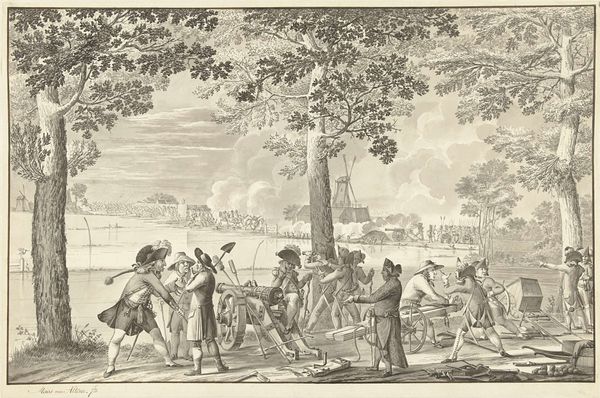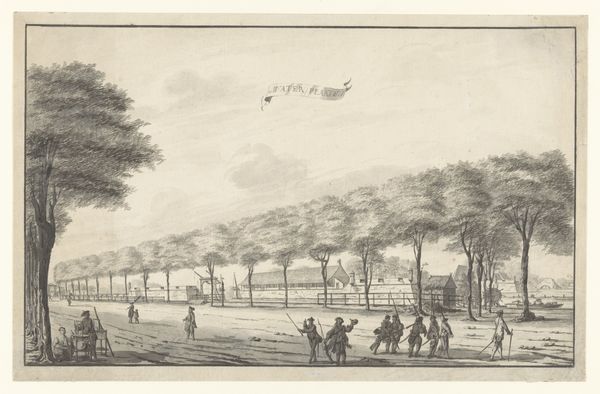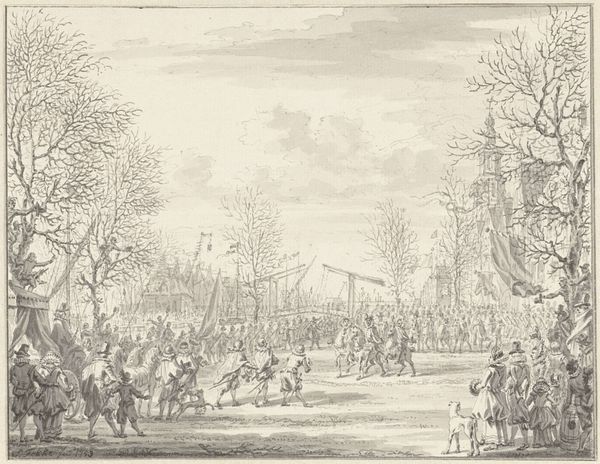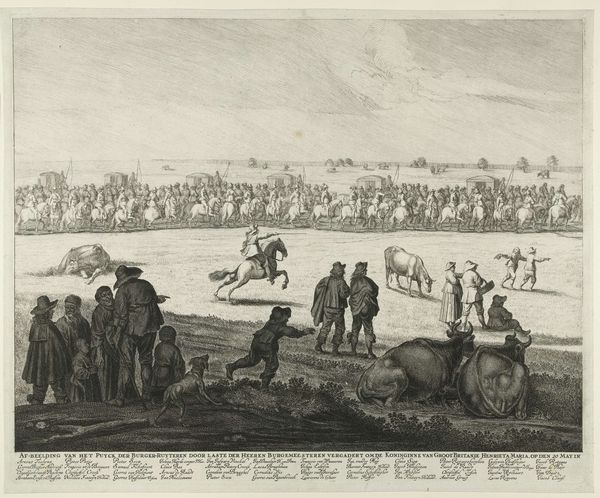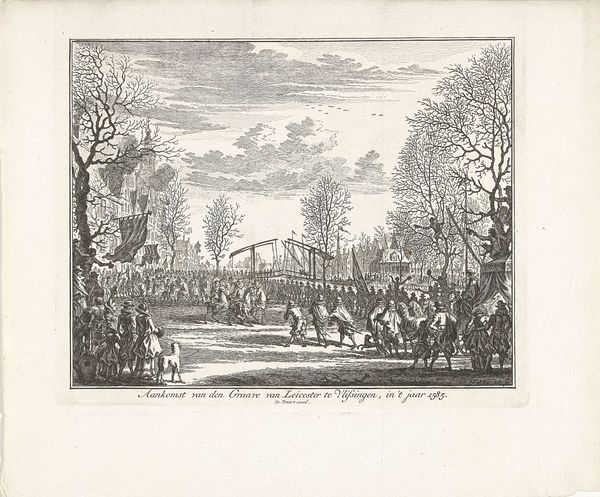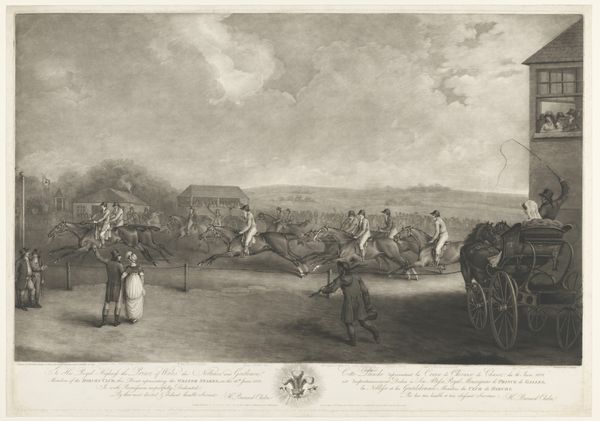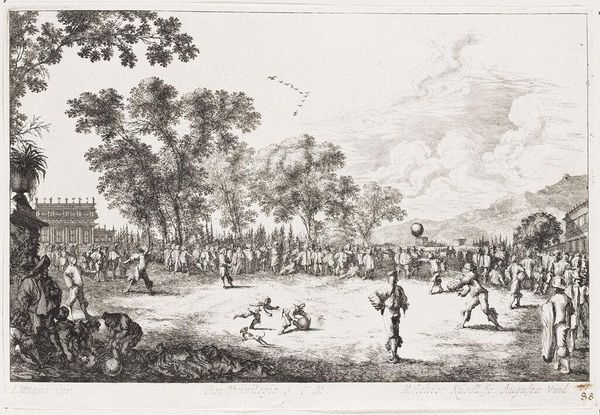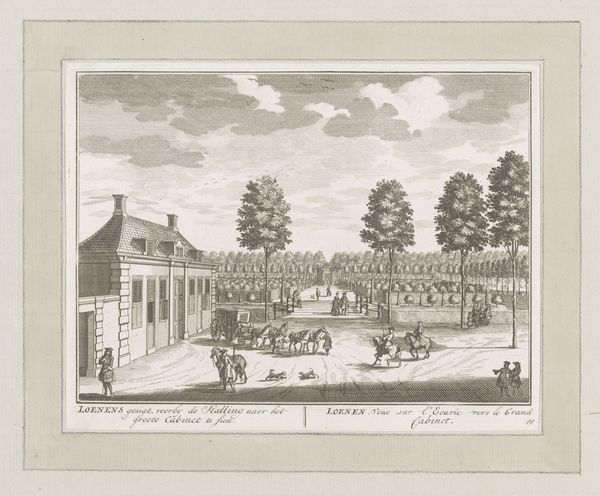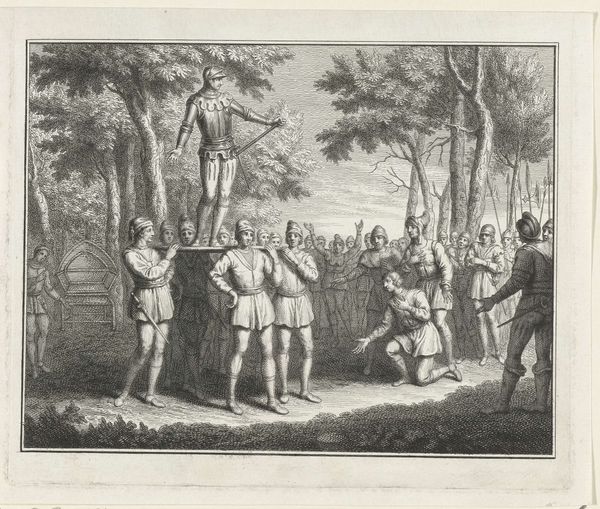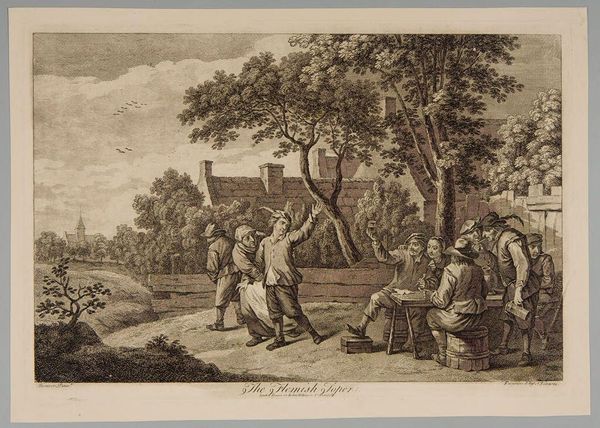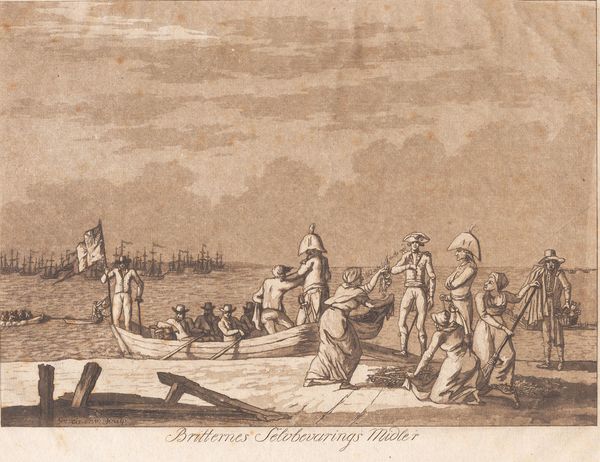
Dimensions: height 237 mm, width 318 mm
Copyright: Rijks Museum: Open Domain
Curator: What a wonderfully chaotic scene. Is that... an angry mob trying to chop down a tree? Editor: Indeed. This is a print from 1787, titled "Spotprent op de pogingen de Oranjeboom omver te trekken," which translates to "Cartoon on the attempts to pull down the Orange Tree." Curator: The Orange Tree... Is that literal, or are we dipping into symbolism here? I'm guessing symbolism, given the rather zealous energy of these characters. It feels almost theatrical in its staging. Editor: It’s deeply symbolic. The "Orange Tree" represents the House of Orange-Nassau, the Dutch royal family. This print captures a period of political turmoil when Patriots, who sought to diminish the power of the Stadtholder, were actively working against the Orangists, the supporters of the royal family. Curator: Ah, okay, so they're not just gardening with extreme prejudice. Knowing that context shifts my reading entirely. I see desperation in those frantic movements, but also something… a little absurd? Look at the way they're all pulling in different directions! Editor: The artist is certainly making a statement about the disunity of the anti-Orangist efforts. There’s a very direct critique of their methods. Notice the hand appearing from the sky with the sword? Curator: Oh! A divine intervention? Is that meant to signify… what? Royal protection, maybe? Editor: Precisely. The inscription says, "Laat ons Waarheid en Rechtvaardigheid verdedigen," or "Let us defend Truth and Justice." It's divine endorsement of the House of Orange, painting their opponents as being against divine will. Curator: Which gives a whole new layer to the caricature-like way they are portrayed. Suddenly their bumbling attempts feel less humorous and more… dangerous, even pathetic. Editor: Exactly. This piece speaks volumes about the power of propaganda through art. How a simple engraving can take a political stance. And considering the piece is anonymously produced, we can't be entirely sure the motives of its maker. Curator: It’s remarkable how such a small, detailed image can pack such a punch. I'm still struck by that sense of theatricality, though, as if it's all a grand, slightly ridiculous play. Editor: Indeed, art can be a mirror, reflecting the absurdities and struggles of its time. It certainly gives food for thought!
Comments
No comments
Be the first to comment and join the conversation on the ultimate creative platform.
